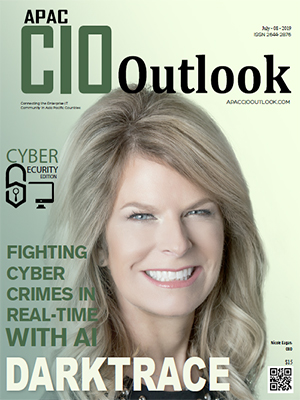In the wake of the growing sophistication of cybersecurity threats and risks, coupled with the unprecedented volume of attacks and increasingly stricter regulatory mandates, there is a pressing need to be in-line with the emerging trends and solutions of the cybersecurity space more than ever. As standards groups, industries, and governments are constantly implementing new security policies—security operations can be complicated by regulations that lag behind the criminals’ strategies. That being said, organizations, many of which have limited IT and security resources, need to find a way to adapt to ensure compliance with these new regulations, while still managing day-to-day operations. Top Cyber Security Companies, may have the answers to their problems.
The rapidly growing number of IoT endpoints is outpacing innovation in the security space. Enterprises need to come to grips with this trend and assert some control over the use of unmanaged devices and establish clear protocols for managed devices. As every industry adapts to new and emerging threats, a zero-trust cloud security model will be considered an enterprise standard— the model eliminates the idea that internal employees are trustworthy individuals who mean no harm and will continuously evaluate an individual’s behavior and actions to identify and eliminate potential threats. Top Cyber Security companies are now enabling buyers with additional visibility across their environments, rather than a static view of the organization with a defined set of technologies, protecting specific points of the network.
Machine learning will play a critical role in gathering intelligence. Moreover, machines will start making more of their own decisions and execute changes themselves to minimize an organization’s cyber-risk, based on this intelligence. The implementation of machine learning into an advanced logging and analytics process will enable us to take in data from multiple different sources—assisting in co-relating the information, detecting threats, automating generation and distributions of security protocols. With the advent of runbooks, security practitioners have a knowledge base that gives them a view on what, how, and when to respond to unusual new connections and cybersecurity incidents. It also lets them automate responses where appropriate. Leveraging machines, they can scan the environment for changes, gather and build intelligence back into the platform, taking action where there’s a clear threat.
The introduction of a two-factor authentication system for all cloud services will act as a first-line-of-defense mechanism and an endpoint process monitoring tool. Many security and risk management companies are rolling out cybersecurity management platforms that harness the power of automation. In a world of fast-moving, automated attacks, advance intelligence is the key to being able to respond swiftly or even predictively, rather than reactively, to individual threats. Additionally, it will allow for the organization’s overall cybersecurity posture to change dynamically in response to the changing threat landscape.
This edition of CIOoutlook brings you the Top Cyber Security Companies.”This list gives you some of the most prominent organizations in the industry that have excelled with their solutions portfolio in the enterprise risk management space. This list is aimed at bridging the gap between businesses and solution providers that are transforming business processes through their insights and technological prowess.



























